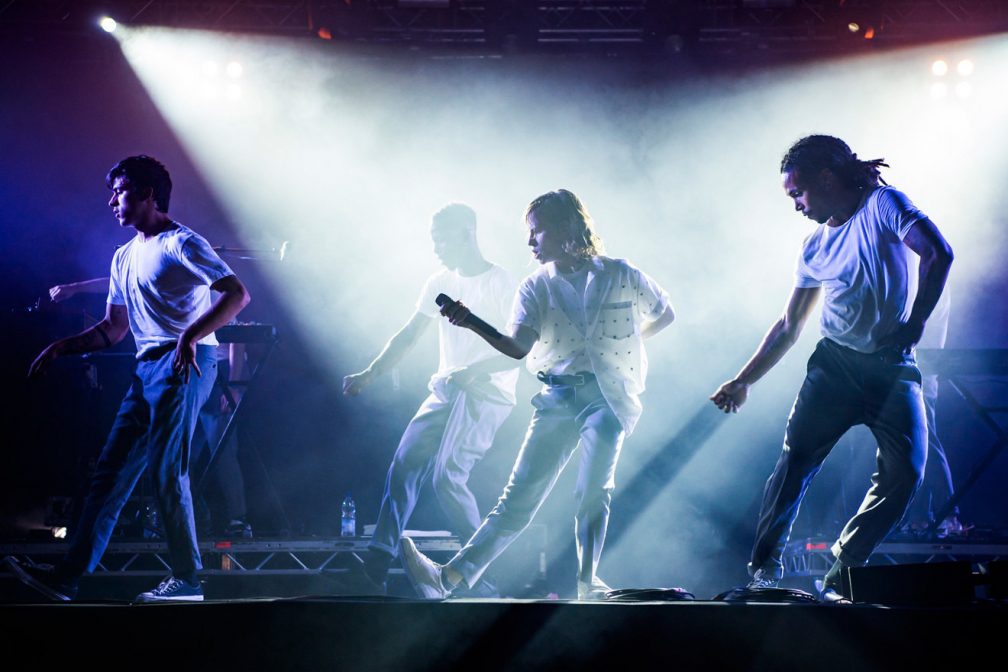 Artists
Artists
Christine and the Queens: the politics of dancing
The runaway star of Coachella and Glastonbury, Christine (and the Queens) is putting the dance back in dance music
Ever since disco mapped desire onto a thrusting, 4/4 beat, the club has been a symbol of personal freedom, glorification of the body and physical release. But as anyone who’s found themselves on an overcrowded dancefloor, cradling a drink protectively against the impersonal heave and shove, can attest, it’s easy to forget the politics enshrined within the act of, well, dancing. There’s no joy in a head-nod, no catharsis in a self-conscious bounce. That’s just shifting weight.
To watch Christine And The Queens is to realise what you’ve been missing. In spite of the name, CATQ is the singular vision of 28-year-old theatre school drop-out Héloïse Letissier. A massive – as in award-winning, fashion-mag-cover-star – deal in her native France, her debut album ‘Chaleur Humaine’ perfects a hybrid strain of art-pop as sharp and slanted as her former idol’s Klaus Nomi’s tailoring. Now, a string of star-making appearances, including the Graham Norton Show and Glastonbury, has seen the retooled, English language re-release going stratospheric in the UK too. But it’s on stage that Letissier unfolds her music into three dimensions; flanked by three dancers and her all-male backing band, she uses choreography to explode the record’s themes of identity, power and self-expression. Moves straight out of the playbooks of Michael Jackson, Willi Ninja and Bob Fosse accompany synth-driven production, pop cultural winks to club classics and off-beam lyrics about drawing a penis on your crotch. Ultimately, it’s a shot across the bow of laptop-wielding introverts and their armada of boredom – oh sure, Christine and the Queens may not be dance music in a narrow, four-to-the-floor sense, but Mixmag has a theory that its spirit, its DNA, its attitude is dance music at its most vital.
“Christine was born in the club,” Letissier affirms, when we test our theory backstage at Latitude. She’s just coming down from a set that saw her best-known song ‘Tilted’ get a minute-long ovation. “She was born there because I met those people that I couldn’t have met anywhere else. Those are places where people gather and belong.” The idea of Christine being a construct, ‘born’ as it were, is nothing new; pop has a long tradition of being a playground for theatre and art-school experimentation, from Ziggy Stardust to Sasha Fierce. But the idea of ‘belonging’ is crucial: on stage, Letissier assumes the role of megastar – you don’t, generally, get routines like that with Radio 1 C-listers – but also MC. She prefaces each performance by defining the venue’s parameters as a safe space, compelling the audience to “feel free to experiment” (she identifies as pansexual herself). At one memorable point at the start of ‘Science Fiction’ the stage is transformed into a club, spiky synths ricocheting as smoke engulfs the stage. “You want to go to Paris for the French discotheque?” she asks the crowd, vogue hands silhouetted against seedy, red light. You can almost smell the Gitanes singeing holes in the upholstery. You don’t have to know your duckwalk from your death drop to work it out: the club for Christine And The Queens stands for freedom.


